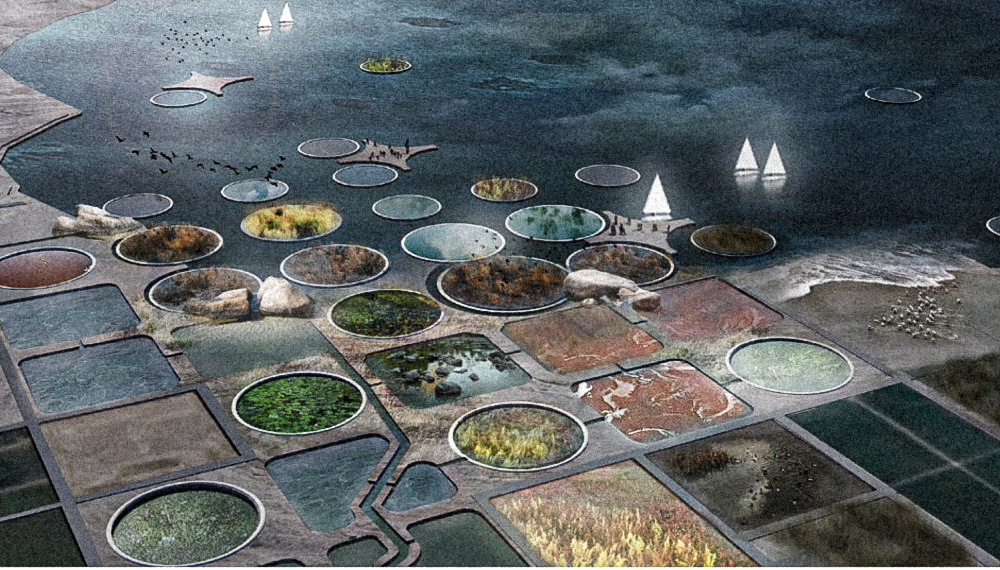WATER ECONOMIES / WATER ECOLOGIES
Salton Sea, CA, USA
Lateral Office, Alexander Robinson, California Department of Water Resources
| The Salton Sea, a shallow lake on the San Andreas Fault line, has alternated between a freshwater lake, an increasingly saline lake and a dry desert basin based on river flow through the Salton Basin over the past hundreds of thousands of years. It was designated as an agricultural sump in 1924 after the California Development Company began constructing irrigation canals to divert water from the Colorado River into the Salton Sink. The Canal quickly filled with silt, then flooded, pouring the entire volume of the Colorado River into the Salton Sink. A military base was constructed by the U.S. Navy, which tested aeroballistic missiles before it was abandoned in 1978. Since the early twentieth century, the sea has become increasingly saltier, a hyper-saline habitat for 430 species of birds that is one of the largest and last significant wetlands on the migratory path between Alaska and Central America. In the 1950s, the lake was a resort town, but as the lake has evaporated and shrunk, these communities have also declined. Lateral Office has proposed a plan for infrastructure that couples production systems, cultural systems and threatened ecosystems to create a public architecture at a regional scale with three marina cities, and deployable pools on the surface of the lake that create three different levels of salinity for recreational and aquaculture opportunities. A desalination pool separates salt from fresh water and is then extracted for the communities through passive solar desalinization, while another pool harvests salt. The three zones, for ecology, industry and recreation, do not attempt to restore Salton Sea, but accept the human changes to the lake and design as an opportunity to revitalize the lake |
2009 - 2010
6000000 acres
-230 feet above sea level

tags: water conservation, brownfields, adaptation, anonymous adaptation, remain, self-initiated, design project, masterplan, desalinization/salinization, habitat loss, cultural preservation, North America, Cocopah, Nearctic, Savanna/Tropical Grassland
References:
Robinson, Alexander. The Spoils of Dust: Reinventing the Lake that Made Los Angeles. San Francisco: Applied Research and Design, 2018.
Cooper, Danika. “Waving the Magic Wand: An Argument for Reorganizing the Aridlands around Watersheds.” The Plan Journal 5 (2020): 163- 184.
Links:
http://lateraloffice.com/WATER-ECONOMIES-2009-10
https://www.newyorker.com/magazine/2015/05/04/the-dying-sea